A testimony to earliest sculpting techniques of Bengal
A rare Vishnu statue has recently been discovered during visits to several archaeological sites in Sarail upazila of Brahmanbaria.
The statue, made of stone, was found inside the Anondomoyee Kali Bari temple, an old temple in Sarail, which is known as the birthplace of Isa Khan, leader of the Baro Bhuiyans, or the zamindars who resisted Mughal expansion in Bengal in the 16th century.
Famously known as a Vishnu statue with dasavataras, which contains ten avataras or incarnations of Vishnu, its back slab is circular. Art theorists and historians say finding a Vishnu statue with dasavataras, which has a circular back, is indeed very rare. This statue exemplifies the initial days of sculpting practices in Bengal, according to researchers.
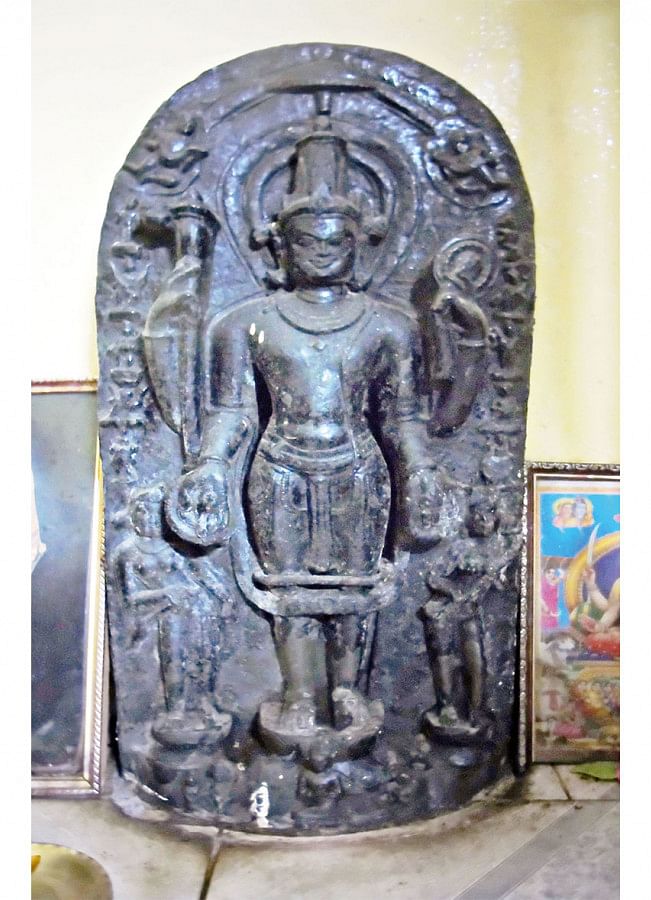
The statue's exceptional quality is its circular shaped back slab. Usually, statues from the ninth and tenth centuries assume this shape.
Experts believe this specific style of sculpting is unique to the eastern regions of Bengal. Talking about the statue's uniqueness, Md Mosharraf Hossain, iconologist and former director of Bangladesh Archaeology Department, said this was perhaps the first case of finding a Vishnu statue with a circular back slab, as well as dasavataras.
"Anondomoyee Kali Bari's Vishnu statue is a clear indication of the unique sculpting techniques that stemmed from the eastern and southern regions of Bengal," he said.
Commenting on the time when it was created, he said, "The upper portion of the statue's back slab is fully circular. It is believed that such statues were not made in Bengal after the first half of the eighth century. Afterwards, the upper portion of the back slab became more and more angular. The upper part, lower part, circular tip, pedestal, ornamentation and other traits of this statue prove that it was made sometime in the late seventh century. It is an example from the initial days of Bengal's growth in sculpting practices."
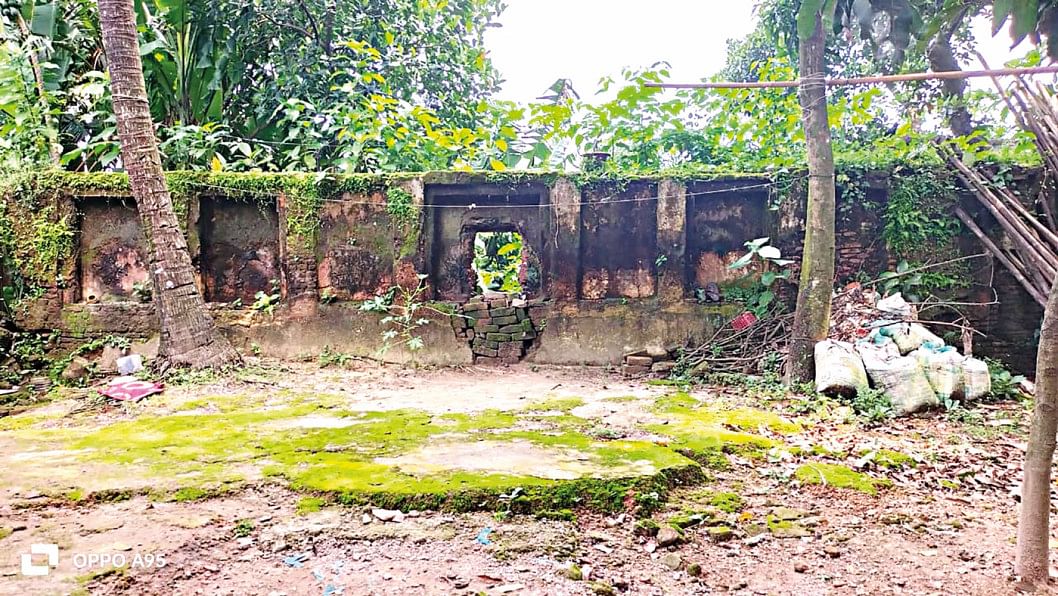
In an article titled "Corpus of Vishnu Images with dasavataras, predominantly from Bengal", published in 2010, German iconologist Gerd JR Mevissen listed 77 Vishnu statues with dasavataras; of them, 63 were found in Bengal's southern and eastern regions, five in the western region and three others in the northern region. However, the recently discovered statue with dasavataras was not listed in Dr Mevissen's article.
The Daily Star sent an email to Dr Mevissen, along with photographs of the statue, asking for his opinion on the discovery.
In his reply, Dr Mevissen said, "This image is indeed previously unrecorded."
" … this image is an important addition to the previously known Vishnu images with avataras from Bengal, since it adds the Brahmanbaria district to the regions of the provenance of such images," wrote the acclaimed German scholar whose expertise lies in Indian idols and statues. In his reply, he also mentions "the only image from Brahmanbaria known so far is … in the Bangladesh National Museum."
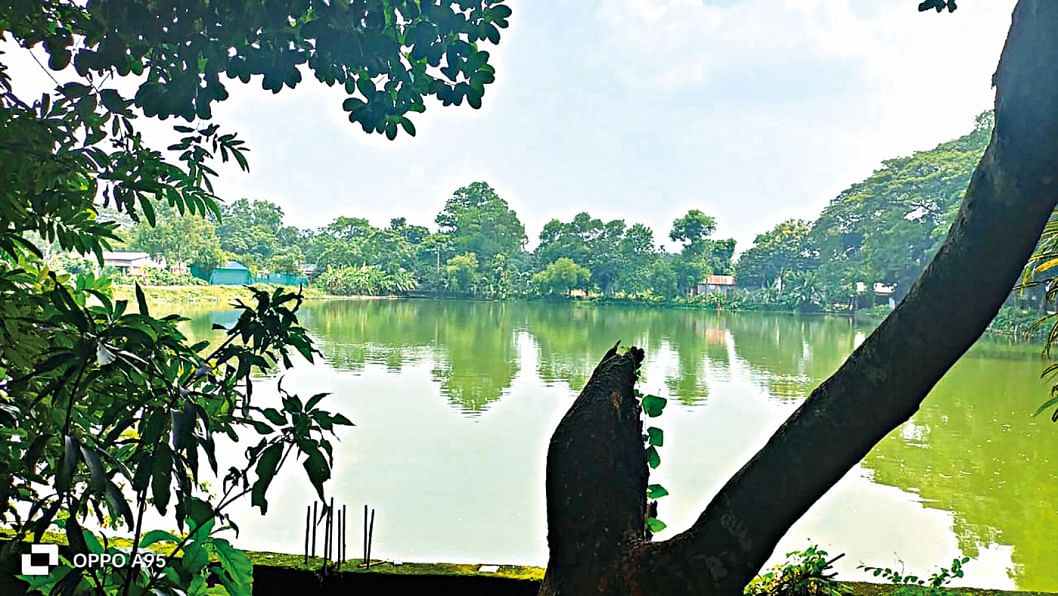
Discussing the uniqueness of the dasavataras sculpted on statues, Dr Mevissen in his 2010 article writes, "Numerous sculptures depicting one individual avatara are known from all over India including Bengal. The dasavataras as a group are either represented on independent stone slabs, or lintels and jambs of temple doors and niches."
The Vishnu statue is fixed on the inner wall of the Anondomoyee Kali Temple, where it is being worshipped by devotees. A Kali statue, made of stone, was previously stolen from the temple. To protect the Vishnu statue from thieves, mortar has been used to install it on the temple's western wall, according to locals.
The statue is two feet five inches high and one foot two inches wide. From Vishnu's feet to the tip of the head, the statue is one foot ten and a half inches high.
Based on the images of the lion's face and umbrella on the upper back slab, the statues found in Bangladesh can be divided into two categories – Keertimukh (lion's face) and Chhotromukh (umbrella). Most statues from Bengal are of the Keertimukh variant. However, the new statue falls into the Chhotromukh category.
The Chhotromukh tradition represents Bengal's own sculpting techniques. Statues sculpted in this tradition are devoid of unnecessary ornamentation. Chhotromukh statues were usually created in the tenth century or earlier, according to researchers.
On this statue, below the umbrella are two bidyadhors, or angels, and below them are the ten avataras. Two sohodevis, or female associates, are placed below the avataras.
From the statue's waist up, ten miniature statues of Vishnu's avataras appear.
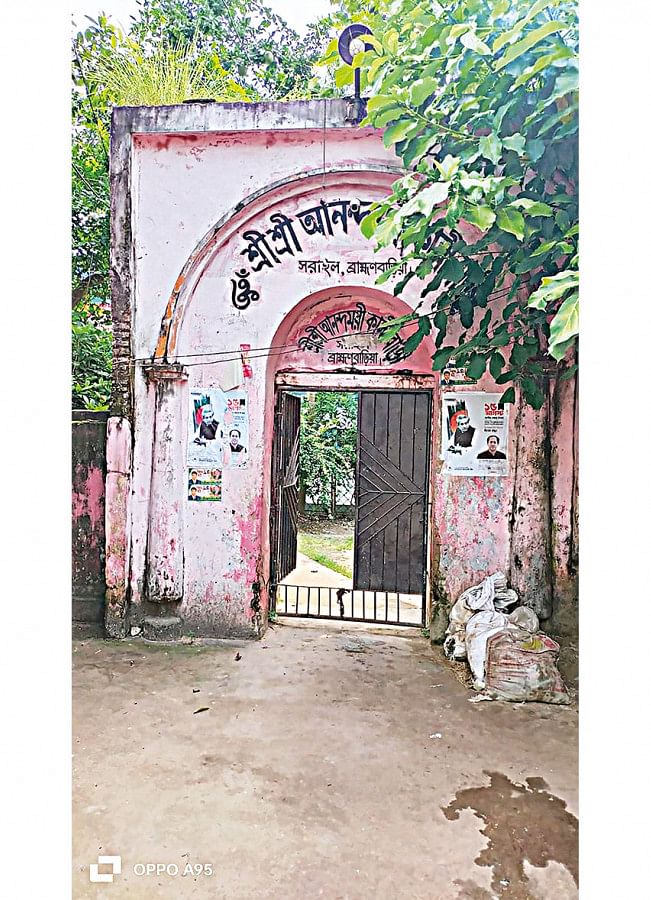
Iconographic researcher Sharmin Rezwana, assistant professor of archaeology at Cumilla University, studied the statue. "From the waist up, on the left side we find statues of Matsya [fish], Varaha [wild boar], Vamana [dwarf], Rama and Buddha, whereas on the right side, we find Kurma [tortoise], Narasimha [man-lion], Balarama [brother of Krishna], Parashurama [Rama with an axe] and Kalkin [the future incarnation]" she said.
"The statue's exceptional quality is its circular shaped back slab. Usually, statues from the ninth and tenth centuries assume this shape," adds Rezwana.
THE KALI TEMPLE AND OTHER VISHNU STATUES
Researchers believe the Dewans of Sarail had founded the Anondomoyee Kali Bari temple. The Dewans are believed to be the direct descendants of Isa Khan.
Researcher and archaeologist Abul Kalam Muhammad Zakaria's books shed light on the different mosques, mazaars and temples built by the Dewans of Sarail. Two books by Zakaria -- "Cumilla Jelar Itihash" (The History of Cumilla District) and "Bangladesher Pratnoshampad" (The Archaelogical Riches of Bangladesh) -- and an article written by Sarail College's founder principal Sheikh Muhammad Abu Hamed tell us that between Afghan rule and the mid-19th century, the Dewans semi-autonomously ruled the Sarail pargana. From the Mughal era till the first phase of British rule, Brahmanbaria was part of Sarail pargana, which had an area of nearly 304 square miles. The first zamindar from the Dewans of Sarail was Majlish Gazi, followed by Mazlish Shahbaz and Nur Muhammad. During the British colonial rule, Sarail's control was taken away from the Dewans and it was added to Brahmanbaria, which was made the new Mahakuma.
Zakaria's book, "Pratnoshampad", also tells us that apart from the Vishnu statue in the Anondomoyee temple, there is another Vishnu statue in Sarail, which is kept in the Basudev temple in Kalikaccha union's Nandipara area. Art theorists believe the Kalikaccha statue is an instance from the later stages of Bengal's sculpting practices -- from the eleventh or twelfth century.
While visiting the Basudev temple, its priest Dulal Chakraborty and managing committee's general secretary Poritosh Das, and Sarail researcher Sheikh Majlish Fuad told this correspondent that after the statue was recovered from a pond beside the temple, it was restored and set up inside the Rokkhakali temple. Later on, the Basudev temple was built on the terraces of the Rokkhakali temple and the statue was set there accordingly.
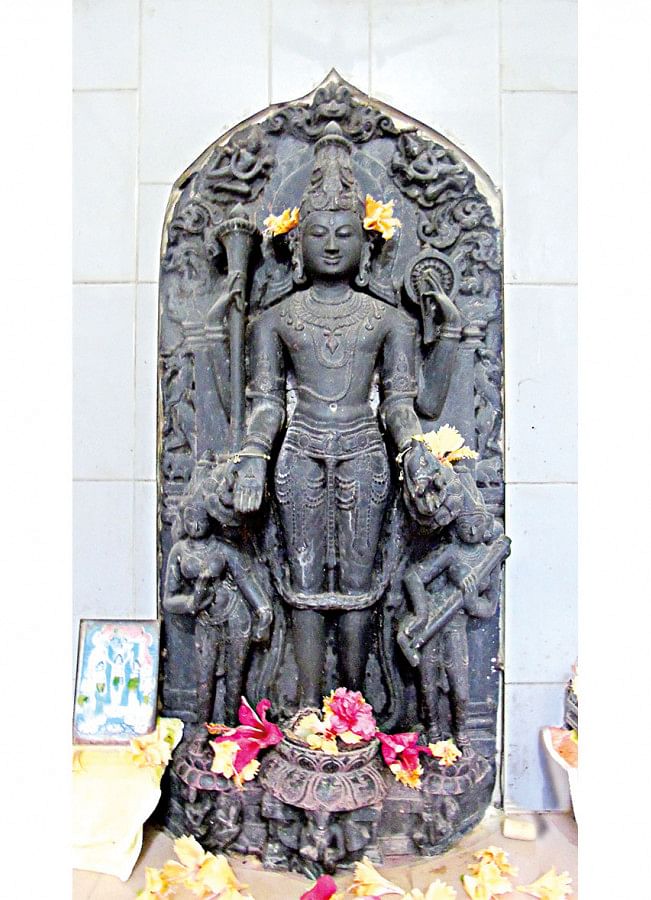
Archaeologist and teacher of Jahangirnagar University's archaeology department Prof Mozammel Huq also thinks this is a significant archaeological discovery. "Finding an ancient statue in a temple in Sarail proves that there were highlands in this area situated along the Meghna-Titas river basin and there were human habitations here a long time ago. During the Hindu-Buddha era, a prosperous settlement was established here. Finding a Vishnu statue here supports the claim that Vishnuism was popular in the Sarail area during ancient times," he said.
"The recovered Vishnu statue will play an important part in reframing the area's history", adds Huq.
COSTODIAN OF A MOSQUE AND A TEMPLE
There are two major archaeological sites in Sarail upazila sadar, both situated along the main road -- the Bikalbazar Shahi Mosque and Anondomoyee Kali Temple. The area surrounding the temple is called Kacharipara. Sarail's famed Dewanbari -- the homestead of the Dewans -- starts from the northern side of the temple and stretches to the Pratobazar mosque. This temple is considered the main temple for the Hindus in Sarail.
Inscriptions found inside the Bikalbazar Shahi Mosque say that the wife of Nur Muhammad -- who was the son of Mazlish Shahbaz -- built this mosque during the Mughal emperor Aurangzeb's rule. Shahbaz and Muhammad were zaminders from the Dewan family. However, no such inscriptions exist for the temple. The old structure of the temple was demolished and rebuilt in 2004. However, locals believe both the mosque and the temple were built around the same time.
Cultural history researcher Sanjib Kumar Debnath, who also heads local organisation Tritaal Sangeet Niketan, said, "No written history of Anondomoyee Kali Bari's establishment can be found. However, it is believed that the temple is about four hundred years old. Sarail's Bikalbazar mosque and the Kali temple were built at the same time. The Dewans of Sarail supported the establishment and maintenance of the temple for a long while."
This correspondent reached out to Dewan Rowshon Ara, one of the descendants of the family, for comments on the Dewans' legacy. She said the Dewan family had donated land and established the Anondomoyee Kali temple beside their homestead. Rowshon adds, "My father, grandfather, great grandfather and ancestors were all involved with the Kali temple's management committee's top posts and they had critical contributions to its day-to-day operations. Not only the Anondomoyee Kali temple, the Dewans also built many important temples, asylums and similar religious establishments in places like Brahmanbaria, Kishoreganj and Habiganj. Starting from the Mughal era to all the way to the British rule, most inhabitants of these areas followed the Hindu religion. The Dewans helped all believers. They built mosques, mausoleums, temples, asylums—all of it."
She lamented that some religious scholars in recent times say the Dewans had committed a sinful act by building a Kali temple. However, according to her, the Dewans built this temple to ensure communal harmony.
"Sarail's Dewans practised secularism for hundreds of years through contributions in political, social and cultural fields", she added.
The locals believe that the Dewans are descendants of Isa Khan. In "Bangladesh District Gazetteers, Comilla District", written by Webster, and Kailash Chandra Singh's book, "Rajmala", Dewans of Sarail are described in this manner.
According to Banglapaedia, Isa Khan was born in Sarail. During his youth, he became Sarail's zamindar. He declared himself as the ruler of the "Bhati area" in 1581-82 and assumed the title of "Masnad-i-Ala". Afterwards, he shifted his administrative centre to Sonargaon.
(Translated from Bangla by Mohammed Ishtiaque Khan)

 For all latest news, follow The Daily Star's Google News channel.
For all latest news, follow The Daily Star's Google News channel. 


Comments